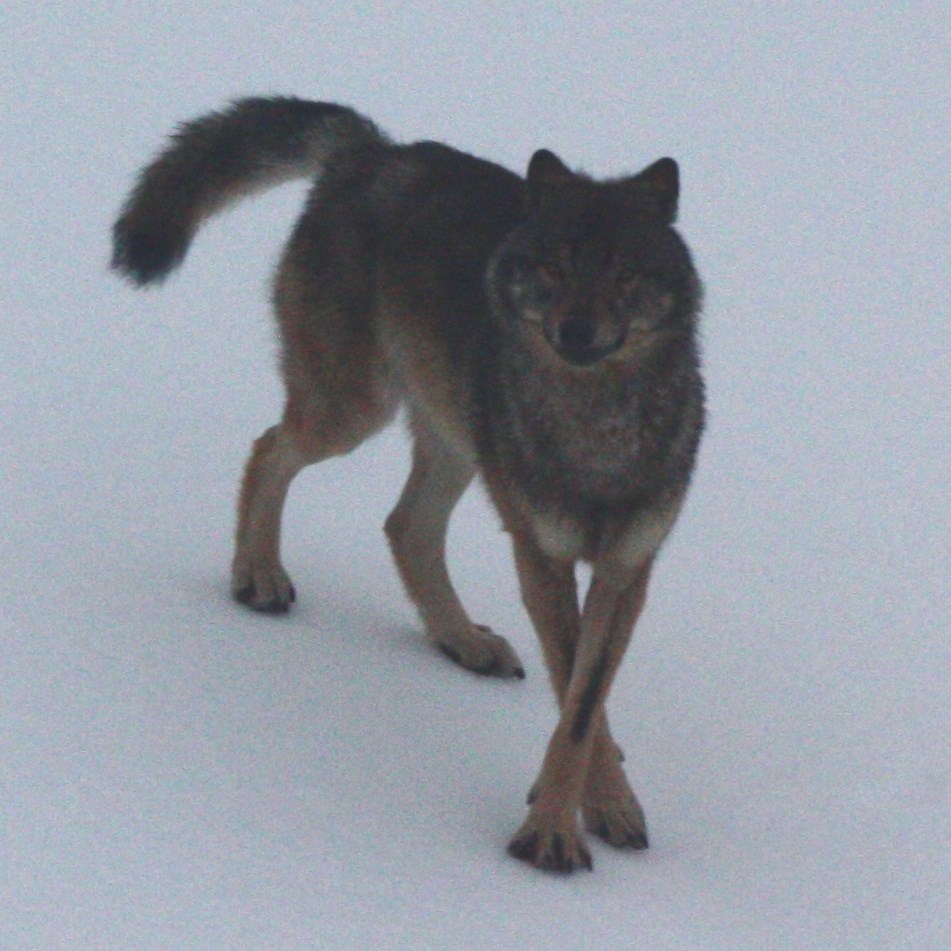It will be at least a year before state sponsored wolf trapping programs in two areas of Southeast Alaska could begin. The Board of Game in March authorized predator control programs to help boost deer numbers near Ketchikan and Petersburg. However, state game managers say they are still collecting information on deer and wolf populations before deciding whether to go ahead with the wolf kills or other options. Joe Viechnicki reports.
For mobile-friendly, downloadable audio, click here.
Alaska’s Board of Game last March approved proposals to authorize two predator control programs, one on Gravina Island near Ketchikan and the other on the islands around Petersburg. State-sponsored predator control is one of the options that state law allows for improving low numbers of deer, moose, or caribou. Other steps can include hunting restrictions and habitat work. Managers are supposed to first investigate what caused the population to drop.
Doug Larsen, regional supervisor for the Alaska Department of Fish and Game’s Wildlife Division, says Fish and Game is still collecting information on the problem, “When we met with the board in spring of 2013, so just this last spring, we made it clear to them this data gathering process was going to take at least through 2013 and into the spring of 2014 and summer of 2014. So the earliest we would even consider doing any kind of active program on the ground would be the fall of 2014.”
The predator-control approach that the state may use would involve paying experienced trappers to kill all of the Gravina wolves and 80 percent of the wolves near Petersburg on Mitkof and Woewodski islands as well as the Lindenberg Peninsula of Kupreanof . There has been support among southeast hunters for the programs however they also prompted written comments from opponents around the globe who urged the state not to kill wolves.
State biologists drafted a feasibility analysis for the program in each area after years of low deer harvests.
Larsen says Fish and Game is trying to find out more about deer populations,“The bottom line is we need to have some indicators, some information in hand with which to assess what is causing deer numbers to be at low levels. Is it weather related, is it vegetation, habitat related, is it predator related? If its predators, is it wolves is it bears, is it a combination? So there’s a number of variables that in our feasibility analysis we pointed out and told the board that it is our intent and remains our intent now to gather information to help inform those decisions.”
Larsen says examples of information gathering efforts include testing whether DNA in deer droppings can inform the Department about population numbers. He also says Fish and Game is looking at habitat quality in the areas proposed for intensive management, “So what we’ve done this last summer is we implemented a pilot effort to look at vegetation on Gravina Island where we set up some specific plots and looked at the amount of shrubs and forbes that are available versus what has been browsed so we could get a better sense for well, is the amount of food here conducive to allowing for more animals to be here or are these habitats at the extent of what they can support?”
The department also hopes to deploy remote cameras for capturing deer, wolves and bear and help with population estimates in the two areas.
Larsen says Fish and Game staff will return to the Board of Game sometime next year with the results of various studies, to agree on the next step.












